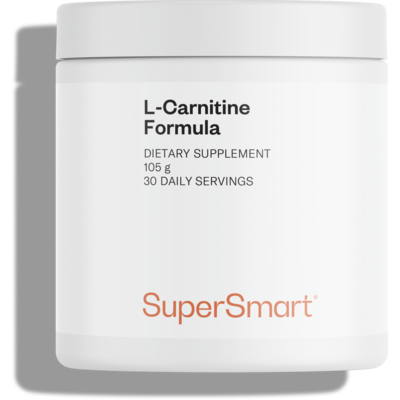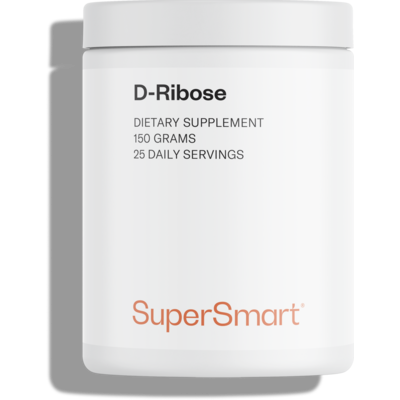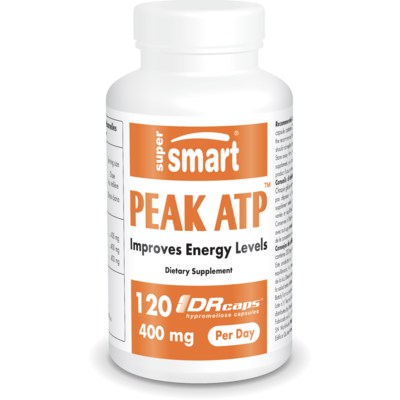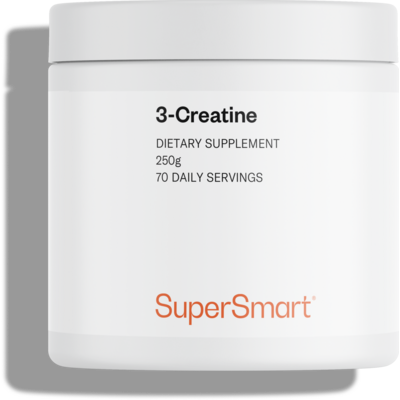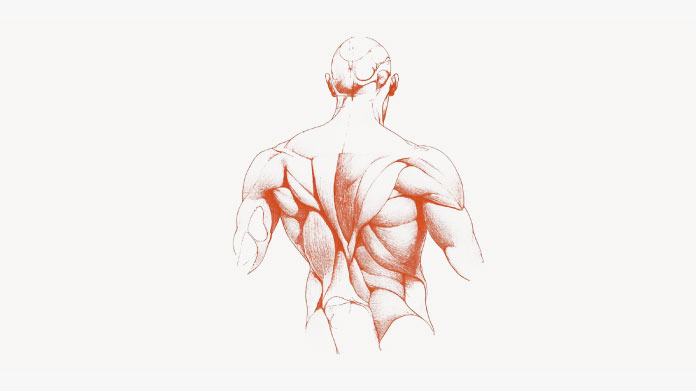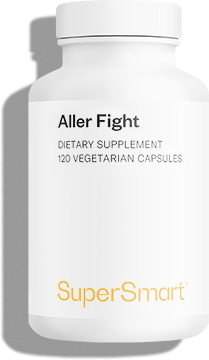What role does ATP play in the body and how can you boost it?
ATP is present in the cells of all living things. What exactly does it do and how can you increase production?

ATP: fuel for cells
Throughout the day, the body needs energy to perform multiple functions. For this, it uses a nucleotide called adenosine triphosphate (ATP), which serves as a kind of fuel for the cell, powering all its reactions (1).
During its hydrolysis, ATP releases one of its three phosphate ions for conversion into adenosine diphosphate (ADP): in doing so, it makes usable energy available to cells. In specific terms, ATP hydrolysis generates between 7 and 15 calories.
Adenosine triphosphate: a source of energy for everything!
While ATP is known mainly in the sports world, where athletes try to optimise the metabolic processes enabling its production, it’s important to understand that adenosine triphosphate is actually crucial for every function in the body.
Digestion, respiration, thermoregulation, maintaining blood concentrations, hormone production, brain function, acting on enzyme mechanisms, etc: ATP is truly multifunctional.
However, the body stores very little ATP, and thus biochemical reactions are constantly being activated to maintain ATP levels (2).
The different mechanisms of ATP synthesis
Aerobic metabolism
At rest, or during low to moderate intensity exercise when energy needs are modest, the body uses oxidation of carbohydrates and fats in the mitochondria (the cells’ ‘powerhouses’) to replenish ATP: this is ATP production by aerobic metabolism (3).
The most efficient mechanism, this can be thought of as a huge reservoir of energy with a low flow, and is therefore the best option for endurance exercise.
Lactic anaerobic metabolism
When exercise intensity reaches a moderate level, cells use glucose to produce ATP. As the intensity of the activity means greater flow rates, the pyruvate and hydrogen ions produced by glycolysis will undergo lactic fermentation, resulting in the production of lactate ions (4).
Alactic anaerobic metabolism
Finally, during short but very intense exercise (sprinting, weightlifting, etc.), it’s alactic anaerobic metabolism which is the preferred mechanism for producing ATP.
This type of metabolism relies on phosphocreatine as the ‘raw material’ for the reaction. However, the body’s phosphocreatine reserves are naturally very low which is why this system is only prioritised for intense but short bursts of exercise: think of it as a tiny reservoir with a huge flow.
Thus a key natural method of boosting ATP production is to engage in regular, moderate exercise. Endurance training (jogging, brisk walking, low-intensity cycling, etc) stimulates aerobic metabolism efficiency and enables ATP to be replenished more quickly and effectively in cells (5).
It’s also important to maintain a healthy and balanced diet sufficient to allow the body to produce ATP.
Supplements that boost ATP production
ATP capsules
For fatigue, loss of concentration and similar issues, you can take ATP capsules!
Adenosine triphosphate can actually be produced in a laboratory in a way that’s completely safe and usable by the body. So if you need to, try taking Peak ATP, a patented ATP formulation.
Creatine
The reason creatine is recognised for increasing performance during successive bursts of short, high-intensity exercise, as well as for improving the effects of resistance training on muscle strength in the over-55s, is precisely because it acts to renew ATP (6-7).
A close relative of amino acids, creatine is involved in cell energy metabolism and is primarily found in muscle and brain cells.
In cells, creatine combines first with a free phosphorus ion, and then - under the effect of the enzyme creatine kinase - this phosphorus ion combines with a molecule of ADP to form a new ATP molecule.
Effectively, therefore, creatine enables ATP to be renewed, hence its ability to increase physical performance during successive short and intense bursts of exercise: in the brief rest phases, creatine helps replenish ATP.
Creatine is therefore another excellent supplement for providing more ‘fuel’ for everyday life!
Additional supplements good for ATP production
We should also mention supplements containing D-Ribose, a major component of ATP (8). L-carnitine, meanwhile, helps transport long-chain fatty acids in the mitochondria to generate ATP (9).
SuperSmart ADVICE
References
- https://planet-vie.ens.fr/thematiques/cellules-et-molecules/les-roles-de-l-atp
- STOCK, Daniela, GIBBONS, Clyde, ARECHAGA, Ignacio, et al.The rotary mechanism of ATP synthase. Current opinion in structural biology, 2000, vol. 10, no 6, p. 672-679.
- DUDLEY, GARY A. et TERJUNG, RONALD L. Influence of aerobic metabolism on IMP accumulation in fast-twitch muscle. American Journal of Physiology-Cell Physiology, 1985, vol. 248, no 1, p. C37-C42.
- SPRIET, Lawrence L. Anaerobic metabolism during exercise. In : Exercise metabolism. Cham : Springer International Publishing, 2022. p. 51-70.
- WIBOM, Rolf, HULTMAN, Erik, JOHANSSON, Mats, et al.Adaptation of mitochondrial ATP production in human skeletal muscle to endurance training and detraining. Journal of Applied Physiology, 1992, vol. 73, no 5, p. 2004-2010.
- MAUGHAN, Ronald J. Creatine supplementation and exercise performance. International Journal of Sport Nutrition and Exercise Metabolism, 1995, vol. 5, no 2, p. 94-101.
- HAAKE, Paul et ALLEN, Gary W. Studies on phosphorylation by phosphoroguanidinates. The mechanism of action of creatine: ATP transphosphorylase (creatine kinase). Proceedings of the National Academy of Sciences, 1971, vol. 68, no 11, p. 2691-2693.
- Pauly DF, Pepine CJ. D-Ribose as a supplement for cardiac energy metabolism. J Cardiovasc Pharmacol Ther. 2000 Oct;5(4):249-58. doi: 10.1054/JCPT.2000.18011. PMID: 11150394.
- Virmani MA, Cirulli M. The Role of l-Carnitine in Mitochondria, Prevention of Metabolic Inflexibility and Disease Initiation. Int J Mol Sci. 2022 Feb 28;23(5):2717. doi: 10.3390/ijms23052717. PMID: 35269860; PMCID: PMC8910660.
- Chycki J, Kurylas A, Maszczyk A, Golas A, Zajac A. Alkaline water improves exercise-induced metabolic acidosis and enhances anaerobic exercise performance in combat sport athletes. PLoS One. 2018 Nov 19;13(11):e0205708. doi: 10.1371/journal.pone.0205708. PMID: 30452459; PMCID: PMC6242303.
Keywords
6 Hours
Super fast shipping
Super fast shipping
Donald Borling
3 Days
Reputable companysearch and the number of…
The research and the number of selection of products.
NAKHJAVAN Shervin
16 Days
The Anti Aromatase is a great product
The Anti Aromatase is a great product. You just need to have constant inventory. Recently this product has been out of stock.
GEORGE Verne
17 Days
Great help on chat
Great help on chat. Knowledgeable and friendly.
Jason Argos
21 Days
Customer service was fast and friendly.
Customer service helped to stop the transaction process of the subscription. I appreciated that.
Greenie
21 Days
I order here due to the high quality of…
I order here due to the high quality of the products and the quick delivery of items - thank you
Barbara J
23 Days
SuperSmart's Eye Pressure supplements: highly recommended!
I purchase SuperSmart's Eye Pressure supplements regularly for over 5 years, and gotta say they are truly a wonderful product for my Glaucoma. Highly recommended if you have eye pain from your Glaucoma.
D. Martinez
27 Days
Quick service
Quick service
MONELL
28 Days
Speedy service.
Speedy service.
ROSENTHAL Marvin
32 Days
Clear website- Efficient
Clear website. Excellent search engine and fast delivery!
Mohamad Hussein
34 Days
They have great products.
They have great products.
Vickie
34 Days
Great Shipping Time!
You Have A Great Shipping Time! Praise The Lord!
DMHoge
36 Days
Doctor Recommended!
Good pricing, very good availability, doctor recommended (couldn't find what I needed anywhere else), and it took only a week to arrive (which I can't complain about).
Al
37 Days
Great product and fast shipping
Great product and fast shipping
Marie
38 Days
New customer 1
I got my order fast and on time.
SA

